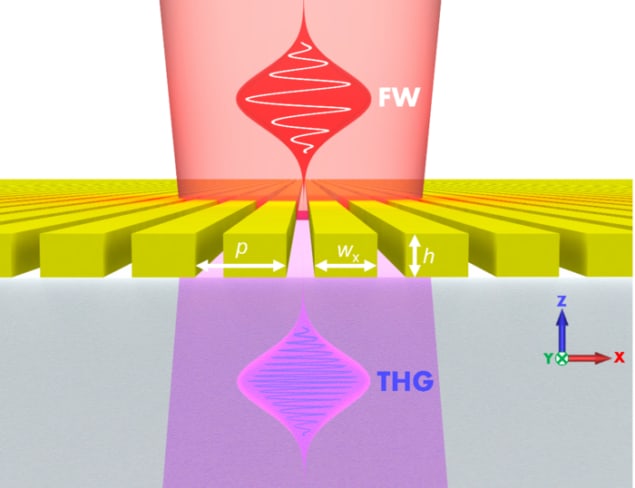
A new, nanostructured version of a material known as a chalcogenide glass could find its way into a wide variety of optoelectronics applications thanks to its unusual transparency. Although chalcogenide glasses are already employed in detectors, lenses and optical fibres for near- and mid-infrared photonics applications, their use in the visible and ultraviolet parts of the electromagnetic spectrum has been limited because they strongly absorb light at these wavelengths. A team from Duke University in the US has now found a way to eliminate this undesirable effect, with possible future applications in underwater communications, environmental monitoring and biological imaging.
Chalcogenide glasses are amorphous materials that contain one or more chalcogens, which are chemical elements from the family that includes sulphur, selenium and tellurium. While they are ideal for use at infrared wavelengths, with applications ranging from optical switches and wavelength converters to molecular fingerprinting and astronomy, their lack of transparency in the ultraviolet is a drawback because many other applications, including underwater communications and biomedical imaging, require UV light sources.
Higher-order harmonic frequencies
Researchers led by Natalia Litchinitser recently predicted that nanostructured gallium arsenide (GaAs), a semiconductor widely employed in electronics, could react with high-intensity pulses of light in a way that differs from the behaviour seen in bulk or even thin-film versions of the material. This is because very thin wires of the GaAs lined up next to each other might vibrate at frequencies one or two octaves higher than the bulk or thin film material, creating higher-order harmonics with much shorter wavelengths.
The team set out to discover whether the same held true for chalcogenide glasses by depositing a 300 nm thick film of arsenic trisulphide (AsS3) onto a glass substrate. They then used electron beam lithography and reactive-ion etching to position the 430 nm wide AsS3 wires 625 nm apart from each other, creating a structure known as a metasurface.
Unexpected result
While bulk AsS3 completely absorbs light above frequencies of 600 THz (the blue-green or cyan colour range), Litchinitser and colleagues found that when they illuminated their metasurface with near-infrared (NIR) light, the nanowires transmitted faint signals at a wavelength of 846 nm, which is in the UV part of the spectrum. They attribute this faint signal to the material generating and transmitting both the NIR frequency and its third harmonic. This was very unexpected because the third harmonic falls into the range at which the material should be absorbing it, Litchinitser says.

Monolayer strain sensor sets new record
The team attribute this result to the generation of nonlinear third harmonics and their phase locking with the original NIR frequency. “The initial pulse traps the third harmonic and sort of tricks the material into letting them both pass through without any absorption,” Litchinitser explains.
The researchers, who report their work in Nature Communications, now plan to engineer chalcogenide structures other than nanowires that can carry harmonic signals even better. One possibility would be pairs of long, thin, Lego-like blocks spaced at the right distance to produce stronger signals at the third and second harmonic frequencies. Stacking multiple layers of these metasurfaces atop each other might also enhance the effect, they predict.



